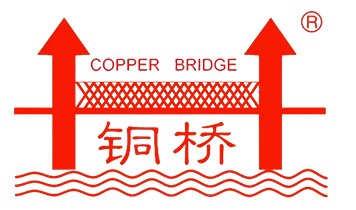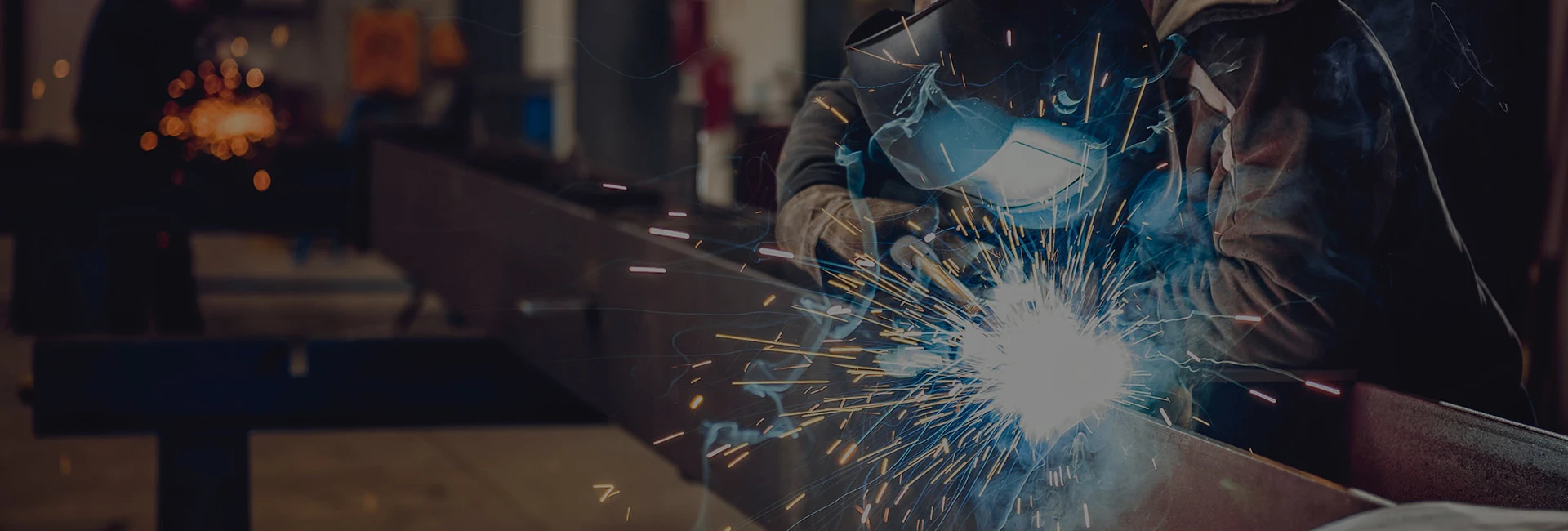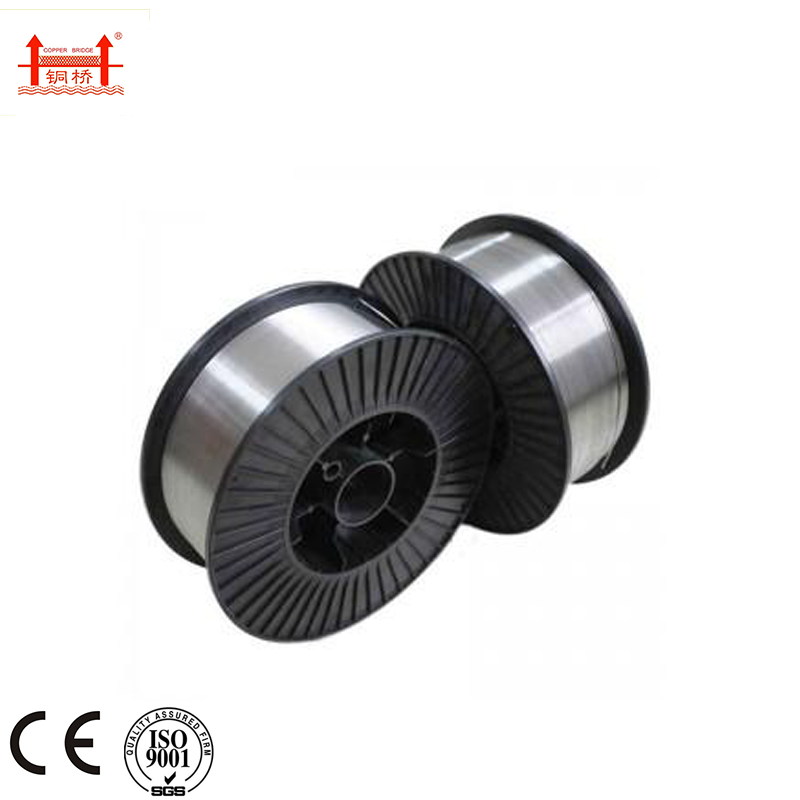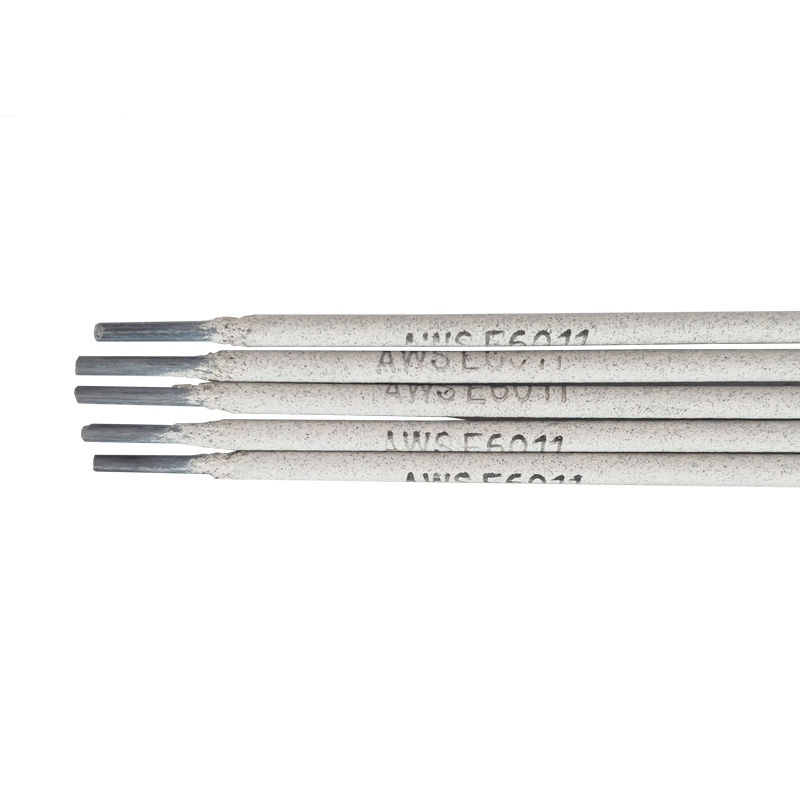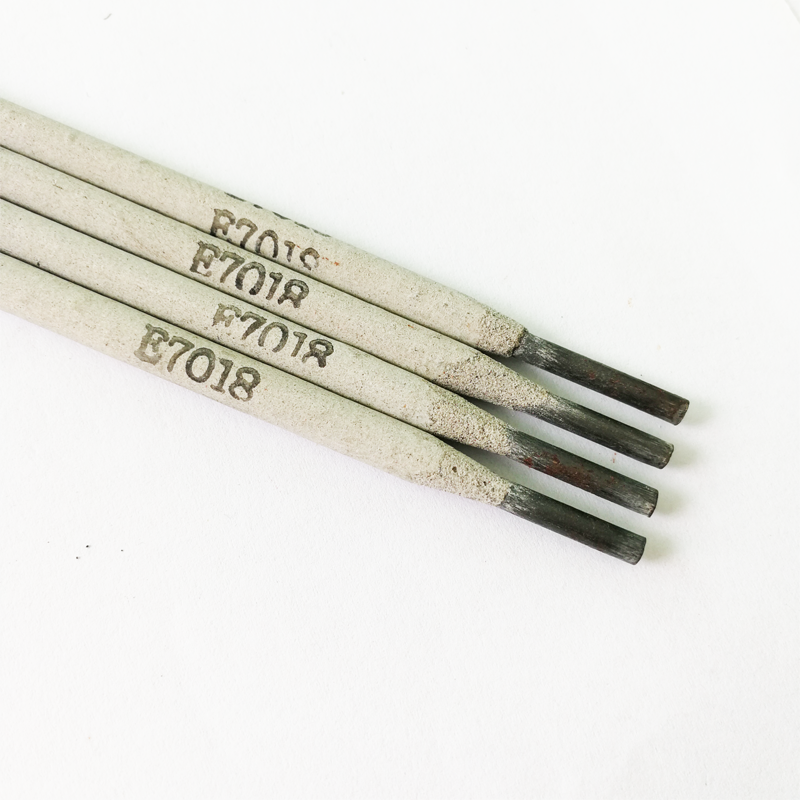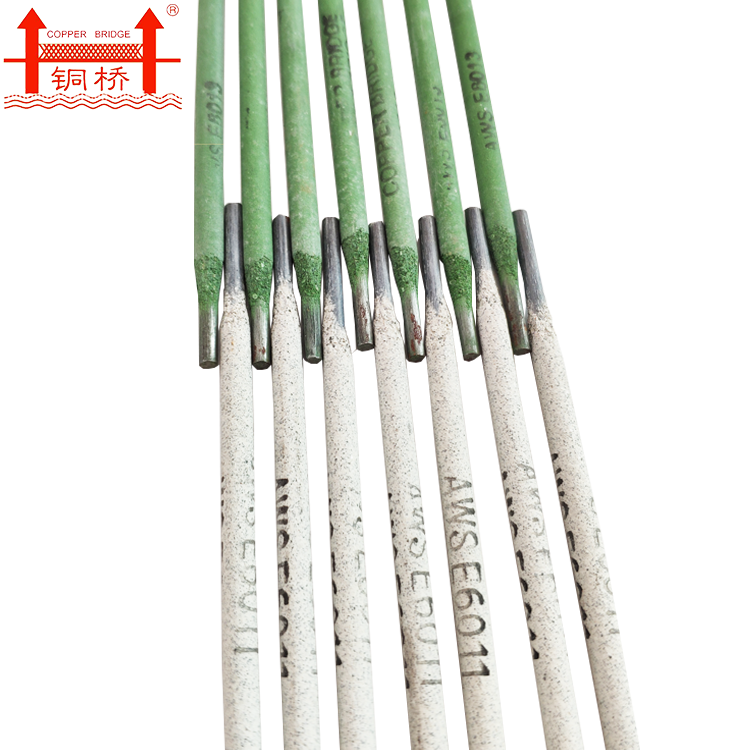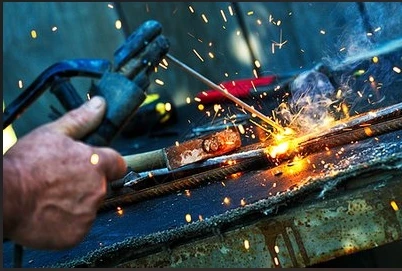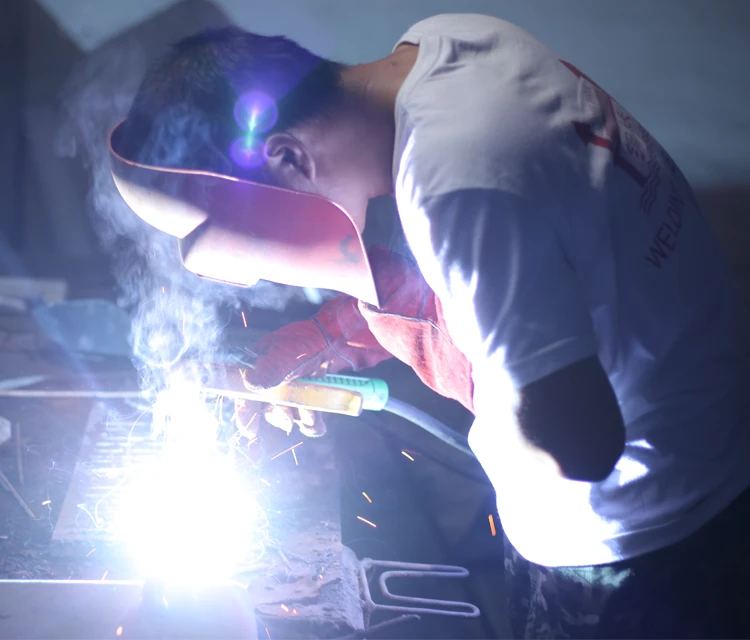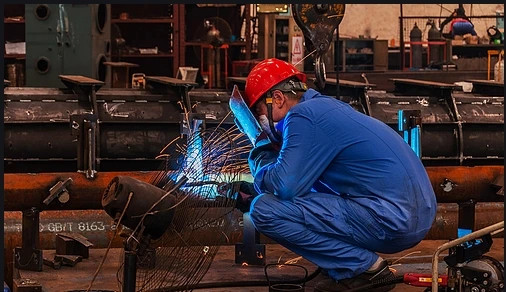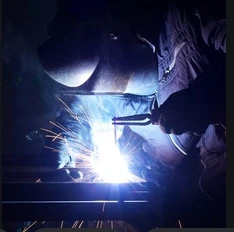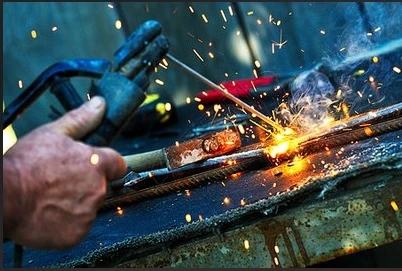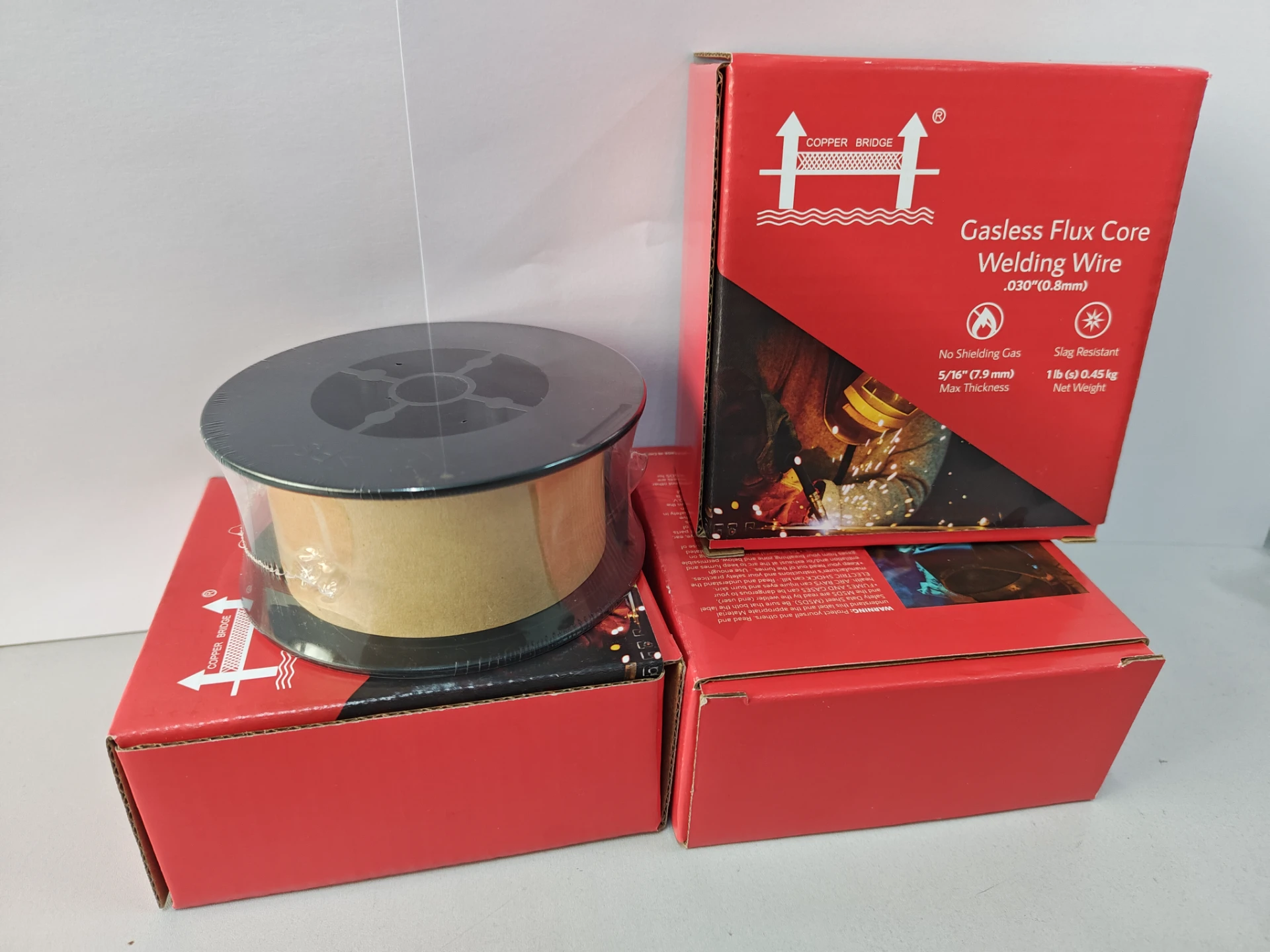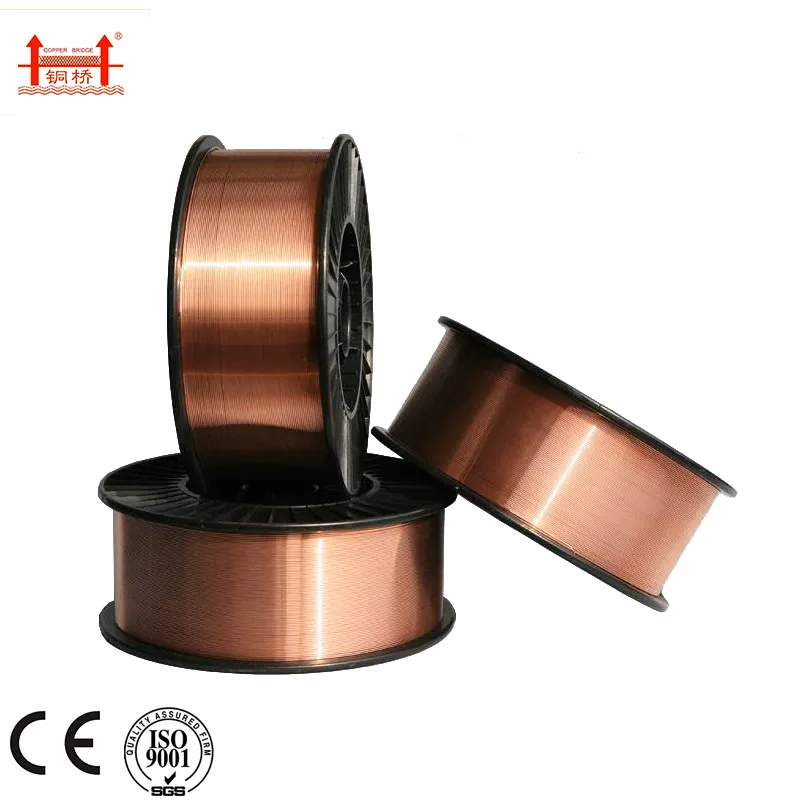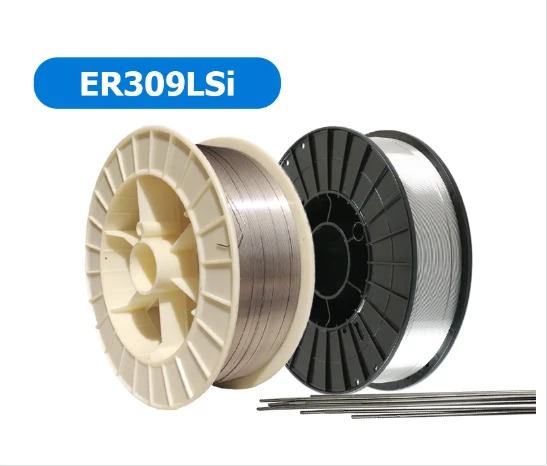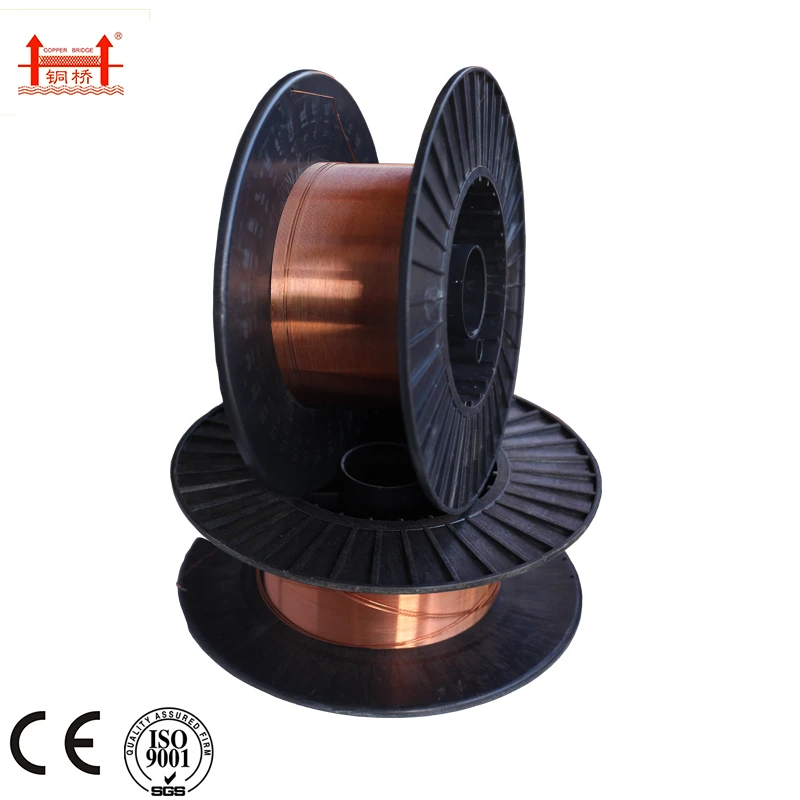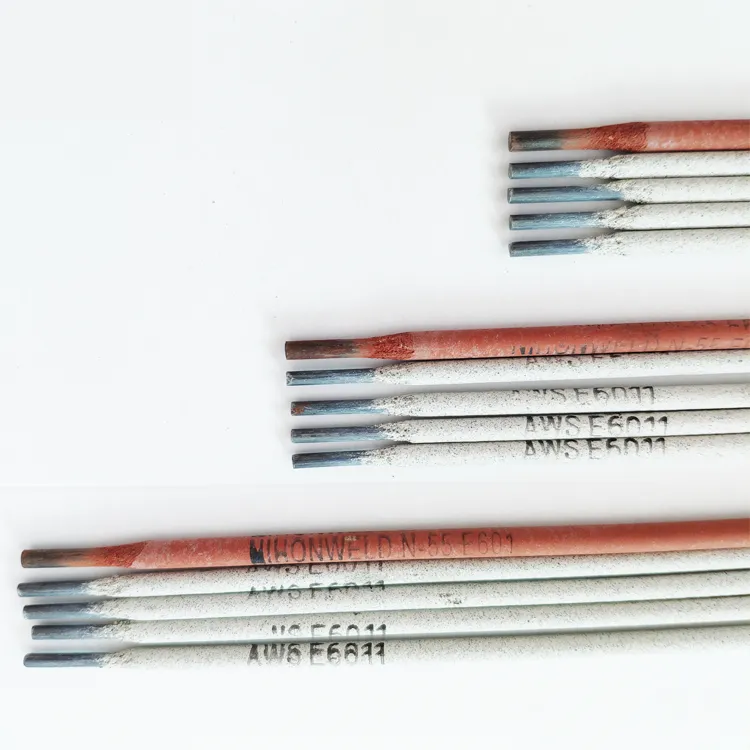AWS E6013 Welding Rods: Versatile, All-Position Performance
Aug . 10, 2025 07:40
The Indispensable Role of AWS E6013 Welding Rods in Modern Industrial Fabrication
In the intricate landscape of modern industrial fabrication, the selection of appropriate consumables is paramount to achieving structural integrity, operational longevity, and cost-efficiency. Among the myriad options available, the aws e6013 welding rod stands out as a universally acclaimed and highly versatile electrode, indispensable for a vast spectrum of applications involving carbon steel. This electrode, specifically categorized under AWS A5.1 E6013, is recognized for its exceptional all-position usability, stable arc characteristics, minimal spatter, and easily removable slag, making it a preferred choice for general-purpose welding in workshops, construction sites, and repair operations globally. Its balanced composition facilitates both AC and DC welding, further enhancing its adaptability across diverse power sources and equipment configurations. The robust demand for welding electrodes AWS E6013 is fueled by its consistent performance in root passes, horizontal fillets, and vertical-up techniques, providing welders with the flexibility needed for intricate and challenging joint designs. Understanding the comprehensive technical attributes, manufacturing rigor, and strategic applications of the aws e6013 electrode is crucial for procurement specialists, engineering managers, and fabrication supervisors aiming to optimize their operational workflows and material specifications. The inherent advantages of using an aws e6013 welding electrode extend beyond mere deposition; they encompass improved productivity due to its ease of use, reduced post-weld cleaning requirements, and the ability to produce aesthetically pleasing beads, even for less experienced operators. As industries continue to push the boundaries of design and material science, the reliability and consistency offered by the electrode AWS E6013 ensure that fundamental structural elements retain their strength and durability, a cornerstone for critical infrastructure projects and high-performance machinery alike. This deep dive will explore the critical aspects that position the aws e6013 welding rod as a benchmark in carbon steel welding, from its detailed manufacturing journey and adherence to stringent quality controls to its impactful role in various industrial sectors, underpinned by real-world data and expert insights. The widespread adoption of the welding electrode 6013 2.5 mm and larger diameters underscores its foundational importance in welding operations worldwide, serving as a testament to its reliability and economic viability in myriad fabrication scenarios. The continued evolution of welding technology, while introducing advanced methods, only reinforces the foundational importance and enduring relevance of proven consumables like the aws e6013 welding rod, which remains a go-to solution for its unparalleled balance of performance and versatility in everyday welding tasks across light to medium structural applications, general sheet metal work, and maintenance repairs. This detailed exploration is designed to provide B2B decision-makers with a comprehensive understanding of why investing in high-quality aws e6013 welding rod products, such as the AWS E6013 Universal Carbon Steel Welding Rods 2.5mm-5.0mm, represents a strategic decision for achieving superior welding outcomes and long-term operational excellence.
Industry Trends and Market Dynamics Shaping the Demand for AWS E6013 Electrodes
The global welding consumables market is undergoing significant shifts, driven by burgeoning infrastructure development, expanding manufacturing sectors, and an increasing emphasis on precision and automation. Within this dynamic environment, the demand for the aws e6013 welding rod continues to demonstrate robust growth, largely attributable to its fundamental role in general fabrication and repair. Emerging trends indicate a heightened focus on consumables that offer not only superior mechanical properties but also enhanced operational efficiency, which the aws e6013 electrode inherently provides through its user-friendly characteristics and consistent performance across various welding positions and current types. The proliferation of small to medium-sized enterprises (SMEs) in developing economies, coupled with significant investments in construction, automotive, and shipbuilding sectors, directly correlates with the sustained market penetration of welding electrodes AWS E6013. Furthermore, the push for sustainable manufacturing practices has led to a greater scrutiny of consumables' environmental impact and energy efficiency; the relatively lower heat input requirements for depositing aws e6013 welding rod can contribute to reduced energy consumption in certain applications, aligning with broader industry goals for energy conservation. Data from market research firms such as Grand View Research and MarketsandMarkets project a steady compound annual growth rate (CAGR) for the global welding consumables market, with stick electrodes, including electrode AWS E6013, retaining a substantial market share due to their cost-effectiveness and versatility, particularly in regions where advanced welding processes are not yet fully adopted or practical for all applications. Technological advancements, while pushing the envelope for automated welding, have also spurred innovations in stick electrode coatings, improving arc stability, spatter control, and slag detachability, thus reinforcing the relevance of products like the aws a5 1 e6013. Supply chain resilience has also emerged as a critical consideration for B2B buyers in recent years, prompting a preference for manufacturers with established global distribution networks and consistent product availability. The ability of suppliers like Jinlong Welding Electrode to consistently deliver high-quality AWS E6013 Universal Carbon Steel Welding Rods 2.5mm-5.0mm, even amidst global disruptions, directly addresses this industry need. Furthermore, the increasing complexity of materials being welded, even within carbon steel categories, demands electrodes capable of handling slight variations in base metal composition while maintaining robust mechanical properties. The forgiving nature of the aws e6013 welding electrode in bridging minor fit-up gaps and accommodating less-than-ideal surface conditions makes it an invaluable asset in repair and maintenance operations, a segment of the market that consistently grows irrespective of new construction cycles. This adaptability ensures its sustained demand even as other welding processes gain traction for specialized applications. The market is also witnessing a gradual shift towards consumables that promote welder comfort and safety; the smooth arc and minimal fume generation associated with quality aws e6013 welding rod contribute to a better working environment, a factor increasingly considered by industrial buyers focused on occupational health and safety standards. Concurrently, the global push towards stricter quality control and certification standards across various manufacturing sectors means that only electrode AWS E6013 products that consistently meet or exceed international specifications, such as ISO 9001 for manufacturing and AWS A5.1 for product performance, will thrive. This trend underscores the importance of partnering with reputable manufacturers to ensure compliance and project success. In essence, the market for aws e6013 welding rod is characterized by a balance of traditional demand, driven by its inherent versatility and cost-effectiveness, and evolving requirements stemming from technological advancements, sustainability goals, and rigorous quality standards, ensuring its continued prominence in the industrial consumables landscape.
Unveiling the Technical Parameters and Performance Excellence of AWS E6013
The technical prowess of the aws e6013 welding rod is defined by a precise combination of its chemical composition, mechanical properties of the deposited metal, and the operational characteristics it exhibits during the welding process. As per the AWS A5.1 E6013 specification, the "E" denotes an electrode, "60" signifies a minimum tensile strength of 60,000 psi (approximately 410 MPa), "1" indicates all-position usability (flat, horizontal, vertical, overhead), and "3" refers to the type of flux coating and current characteristics, specifically titania-potassium, which ensures excellent arc stability with both AC and DC (electrode positive or negative) currents. This unique coating contributes significantly to the smooth arc, low spatter, and ease of slag removal that are hallmarks of the electrode AWS E6013. The deposited metal typically exhibits a tensile strength ranging from 410-530 MPa, yield strength between 330-430 MPa, and elongation of 17-22%, making it suitable for general-purpose structural fabrication where moderate strength and good ductility are required. Impact toughness, often measured by Charpy V-notch testing at specific temperatures, also meets general requirements for non-critical applications. For instance, reputable manufacturers ensure that their aws e6013 welding electrode batches consistently pass rigorous internal and external testing protocols, verifying these mechanical properties. The diameter range for AWS E6013 Universal Carbon Steel Welding Rods 2.5mm-5.0mm accommodates various material thicknesses and joint configurations, with the welding electrode 6013 2.5 mm being ideal for thinner gauge metals and intricate work, while larger diameters are preferred for heavier sections. Operational parameters, such as amperage settings, are critical for optimal performance; generally, a 2.5mm electrode might require 50-90 amps, a 3.2mm electrode 80-130 amps, and a 4.0mm electrode 120-180 amps, varying slightly based on the manufacturer's formulation and specific application. These precise parameters, when adhered to, ensure consistent penetration, proper bead profile, and minimized distortion. The chemical composition of the deposited weld metal, while not strictly specified by AWS for E6013 beyond general carbon steel characteristics, typically includes low levels of carbon (0.05-0.15%), manganese (0.30-0.60%), and silicon (0.10-0.30%), with trace amounts of other elements. These controlled percentages contribute to the weld's excellent ductility and resistance to hot cracking. Furthermore, the moisture resistance of the flux coating is a critical factor for preventing hydrogen-induced cracking, especially in humid environments, which is why proper storage and handling, often involving re-baking at specific temperatures, are recommended for professional-grade aws e6013 welding rod. The stability of the arc, which allows for easy striking and restriking, is a direct consequence of the titania and potassium in the flux. This feature significantly enhances productivity on intermittent welds, reducing downtime for re-ignition. In essence, the technical specifications of the aws e6013 welding rod are meticulously engineered to deliver a balanced performance that prioritizes ease of use, reliable mechanical properties, and broad applicability across various welding tasks, establishing it as a foundational consumable for a wide array of carbon steel fabrication projects.
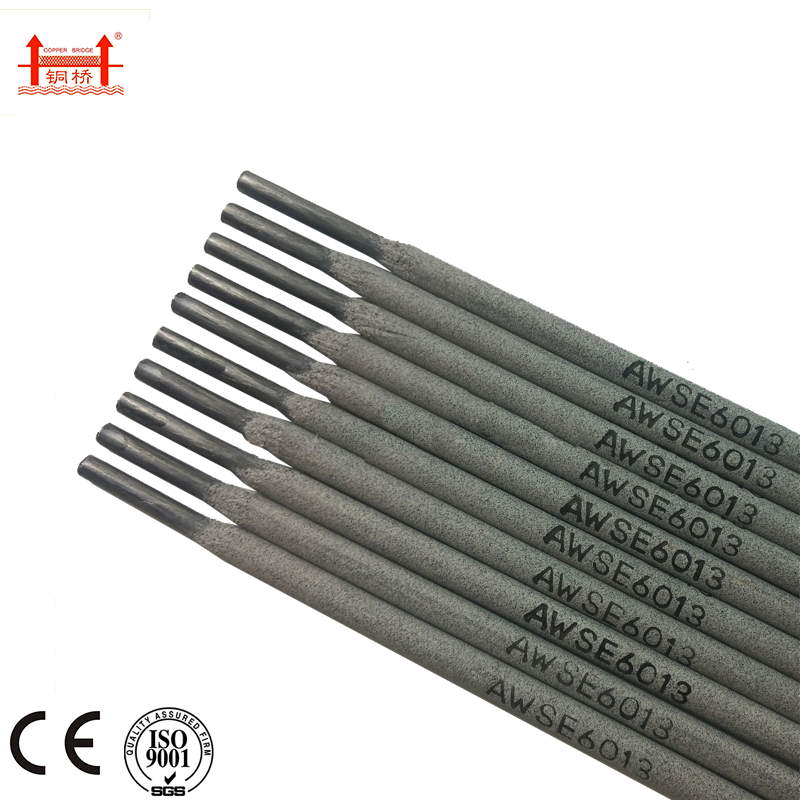
Visual representation of quality aws e6013 welding rod for diverse applications.
Key Technical Parameters for AWS E6013 Welding Rods
| Parameter | Description / Value Range (Typical) |
|---|---|
| AWS Standard | AWS A5.1 E6013 |
| Tensile Strength (Min.) | 60,000 psi (410 MPa) |
| Yield Strength (Min.) | 50,000 psi (345 MPa) |
| Elongation (Min.) | 17-22% |
| Welding Positions | All positions (Flat, Horizontal, Vertical Up/Down, Overhead) |
| Current Type | AC or DC (electrode positive or negative) |
| Slag Type | Rutile-based, easily removable |
| Typical Applications | General fabrication, sheet metal, light structural, repair, maintenance, pipe welding (thin wall) |
| Common Diameters | 2.5mm, 3.2mm, 4.0mm, 5.0mm |
| Moisture Absorption | Low, but re-baking recommended for critical applications or prolonged exposure |
The Meticulous Manufacturing Process of AWS E6013 Universal Carbon Steel Welding Rods
The production of high-quality AWS E6013 Universal Carbon Steel Welding Rods 2.5mm-5.0mm is a complex, multi-stage process that combines precision engineering with stringent quality control, ensuring each aws e6013 welding rod meets the exacting standards of AWS A5.1 E6013 and delivers consistent performance. The journey begins with the selection of high-purity steel core wire, typically low-carbon steel, which serves as the conductor and primary filler material. This wire undergoes a meticulous drawing process to achieve the precise diameter required, such as the welding electrode 6013 2.5 mm, 3.2mm, 4.0mm, or 5.0mm, ensuring uniformity and straightness. Following the drawing, the core wire is thoroughly cleaned to remove any contaminants that could compromise weld integrity. The next critical stage involves the preparation of the flux coating. This coating is a carefully formulated blend of mineral and chemical compounds, predominantly titanium dioxide (rutile), cellulose, silicates, and binders. Rutile provides a smooth, stable arc and easy slag removal, while cellulose contributes to gas shielding and deep penetration. Other components are added to control arc characteristics, deoxidize the weld pool, stabilize the arc, and enhance mechanical properties. The exact proportion and purity of these raw materials are crucial and often a trade secret, refined over years of research and development by manufacturers like Jinlong Welding Electrode. Once the flux mixture is prepared, it is applied to the core wire through an extrusion process. The core wire is fed through a die, and the flux mixture is pressed onto its surface under high pressure, ensuring a concentric and uniform coating thickness. This step is vital for consistent arc performance and weld quality. After extrusion, the coated electrodes are subjected to a controlled drying and baking process. This process removes excess moisture from the flux coating, which is crucial for preventing hydrogen porosity and cracking in the weld metal. The temperature and duration of baking are meticulously controlled to achieve optimal moisture content and consolidate the coating, making it durable and resistant to chipping. Following baking, the electrodes undergo a tipping process, where a small portion of the flux is removed from one end to facilitate easier arc striking. The identification of each electrode AWS E6013 with its specific AWS classification is then applied, often through printing on the electrode itself or its packaging, ensuring traceability and proper identification in the field. Throughout the entire manufacturing process, rigorous quality control measures are implemented. This includes raw material inspection (spectroscopic analysis for chemical purity), in-process checks (coating concentricity, diameter, weight), and final product testing. Final product testing involves destructive and non-destructive evaluations, including visual inspection for defects, measurement of mechanical properties (tensile strength, yield strength, elongation, impact toughness) of deposited weld metal, chemical analysis of the weld metal, and practical weldability tests across all specified positions and current types. Compliance with international standards such as ISO 9001 for quality management systems, and product-specific certifications like ANSI (American National Standards Institute) and AWS (American Welding Society) A5.1, is non-negotiable for reputable manufacturers. The emphasis on these standards ensures that each aws e6013 welding electrode consistently meets global benchmarks for performance and safety. This meticulous manufacturing flow, from raw material sourcing to final packaging, underpins the superior quality, reliability, and extended service life of aws e6013 welding rod, making it a trusted choice for critical industrial applications demanding high performance and defect-free welds.

Precision manufacturing ensuring consistent quality of aws e6013 electrode.
Versatile Application Scenarios and Distinct Technical Advantages of AWS E6013
The widespread utility of the aws e6013 welding rod stems from its adaptability across a multitude of industrial sectors and its robust technical advantages. In the petrochemical industry, where reliability and structural integrity are paramount, welding electrodes AWS E6013 are frequently employed for the fabrication and repair of non-pressure components, storage tanks, and various pipe systems that handle non-corrosive fluids. Its stable arc and manageable puddle make it ideal for light to medium gauge pipe welding and general structural work within refineries and chemical plants, often alongside more specialized consumables for critical pressure vessels. In the metallurgy sector, particularly in manufacturing facilities and foundries, aws e6013 welding rod is used for repairing cast iron components, fabricating jigs and fixtures, and general maintenance of machinery and equipment. The ability to achieve smooth, clean welds with minimal porosity is highly valued here for both aesthetic and functional purposes. For water supply and drainage systems, including pipelines, water treatment plants, and pumping stations, the aws e6013 electrode provides a reliable solution for joining carbon steel pipes and fittings, ensuring leak-proof connections for non-potable water applications. Its ease of use for vertical-down welding is particularly advantageous in pipeline construction where speed and efficiency are critical. Beyond these core industries, the electrode AWS E6013 finds extensive use in shipbuilding for general hull construction, bulkheads, and deck structures, where its all-position capability facilitates complex assembly processes. In automotive manufacturing and repair, it is a staple for fabricating exhaust systems, chassis components, and body panels, especially in repair shops due to its tolerance for less-than-perfect surface conditions. The construction industry utilizes aws e6013 welding electrode for light structural steel framing, railings, gates, and various architectural metalwork, benefiting from its aesthetic bead appearance and ease of operation on site.
From a technical advantage perspective, the aws e6013 welding rod excels in several key areas. Firstly, its energy efficiency is notable in comparison to some other electrode types that require higher heat inputs or more complex pre-heating procedures; the relatively low voltage requirements and efficient deposition allow for reduced energy consumption during welding, leading to operational cost savings. Secondly, its inherent properties contribute to corrosion resistance for general carbon steel applications. While not specifically designed for highly corrosive environments (where stainless steel or specialized alloys would be used), the dense and uniform weld metal deposited by a quality aws e6013 welding rod minimizes porosity and inclusions, which are potential sites for corrosion initiation. This dense structure, combined with proper post-weld cleaning and potentially protective coatings, significantly extends the service life of welded components in moderately aggressive environments. Thirdly, the ease of slag removal, which often peels off cleanly after cooling, reduces post-weld cleaning time and labor costs, directly contributing to increased productivity. Fourthly, its excellent arc stability, even with small welding machines or fluctuating power supplies, ensures consistent weld quality and reduces operator fatigue. Finally, the ability of the welding electrode 6013 2.5 mm to manage gaps and maintain a stable arc on thin materials makes it exceptionally versatile, minimizing the need for multiple electrode types on a single project. These combined features underscore why the aws e6013 welding rod remains a cornerstone consumable, valued not just for its initial cost-effectiveness but for the total value it brings through improved efficiency, quality, and extended component lifespan in demanding industrial contexts.

Diverse applications of welding electrodes AWS E6013 in industrial settings.
Strategic Manufacturer Comparison and Tailored Solutions for AWS E6013 Buyers
In a competitive global market, selecting the right manufacturer for aws e6013 welding rod is as critical as understanding the electrode itself. While numerous suppliers offer welding electrodes AWS E6013, discerning buyers must evaluate several factors beyond mere price, focusing on consistency, quality assurance, production capacity, and the ability to offer customized solutions. Reputable manufacturers, such as Jinlong Welding Electrode, differentiate themselves through their unwavering commitment to adhering to strict international standards like AWS A5.1 E6013 and ISO 9001. This adherence ensures not only the mechanical properties and chemical composition of the deposited weld metal but also the consistent physical characteristics of the electrode itself, such as coating concentricity, which directly impacts arc stability and ease of use. A comparative analysis often reveals variations in flux coating formulations; while all aim for the E6013 characteristics, some manufacturers achieve superior arc smoothness, reduced spatter, or easier slag removal due to proprietary blends and refined manufacturing processes. For instance, Jinlong Welding Electrode's AWS E6013 Universal Carbon Steel Welding Rods 2.5mm-5.0mm are engineered to provide exceptionally consistent arc striking and re-striking, a feature highly valued in intermittent welding applications, alongside minimal fume generation, contributing to a safer work environment. Production capacity is another vital element; for large-scale industrial projects or consistent operational supply, partnering with manufacturers capable of delivering high volumes without compromising quality is essential. This often involves robust supply chain management, advanced automated production lines, and extensive warehousing capabilities. Furthermore, leading manufacturers offer comprehensive technical support and the potential for customized solutions. While the aws e6013 welding rod is a standard product, specific project requirements might necessitate minor adjustments in packaging, batch testing protocols, or even slight modifications to flux composition for highly specialized applications, though this is less common for standard E6013. For instance, some clients may require specific packaging configurations for automated feeding systems, or unique certification documentation for specific regulatory bodies in their region. Jinlong Welding Electrode prides itself on its flexibility to accommodate such bespoke needs, leveraging its engineering expertise and agile manufacturing setup. This includes offering specific diameter mixes (e.g., bulk orders of welding electrode 6013 2.5 mm combined with larger sizes), custom labeling, and tailored delivery schedules to integrate seamlessly with clients' production cycles. The longevity of a manufacturer in the industry, their global footprint, and a track record of successful client partnerships further vouch for their reliability and authoritativeness. Customer feedback and testimonials, particularly from long-term B2B clients, offer invaluable insights into a manufacturer's service quality, responsiveness, and problem-solving capabilities. Ultimately, the decision to procure aws e6013 welding rod involves a holistic assessment of a manufacturer's product quality, operational scalability, technical support, and commitment to client-specific needs, ensuring a sustainable and value-driven partnership that goes beyond a transactional purchase.
Real-World Application Cases and Performance Validation of AWS E6013
The practical effectiveness and reliability of the aws e6013 welding rod are best illustrated through its widespread adoption in various challenging industrial projects and everyday fabrication scenarios. A compelling example comes from a large-scale infrastructure project in Southeast Asia involving the construction of a new bridge for which numerous non-critical structural steel components, including support beams and access platforms, required robust and economical welding solutions. The project specified the use of welding electrodes AWS E6013 due to its all-position welding capability and excellent performance on rusty or painted surfaces, which are common challenges in outdoor construction environments. The ease of striking and restriking the arc, coupled with the smooth bead appearance and self-lifting slag, significantly reduced the time spent on post-weld cleaning and rework, ultimately leading to a 15% reduction in overall welding labor costs compared to initial projections using alternative electrodes. This demonstrated the true economic advantage of the aws e6013 welding rod in large-volume fabrication. Another critical application case involved a major industrial plant in the Middle East undergoing extensive maintenance and repair work on its piping systems and machinery frames. Given the tight deadlines and varied conditions of the repair sites, the versatility of the aws e6013 electrode, particularly the welding electrode 6013 2.5 mm and 3.2mm diameters, proved invaluable. Welders praised its forgiving nature on inconsistent fit-ups and its ability to deliver consistent quality welds even when base material preparation was less than ideal. The low spatter characteristic also minimized clean-up in confined spaces, a crucial safety and efficiency factor. Customer feedback from this project highlighted the reduced training curve for new welders due to the E6013's user-friendliness, enabling faster onboarding and increasing overall workforce productivity. Furthermore, in the realm of educational and vocational training, the aws e6013 welding electrode serves as a foundational consumable. Technical schools and welding academies globally rely on the electrode AWS E6013 for initial welder training due to its ease of operation and ability to produce acceptable welds with relatively little experience, allowing students to quickly grasp fundamental welding techniques before progressing to more complex processes or electrodes like E7018. This widespread use in training underscores its fundamental role in developing the next generation of skilled welders. In terms of long-term performance validation, numerous independent studies and industry reports corroborate the durability and service life of structures fabricated with high-quality aws e6013 welding rod. For instance, a study published in the 'Journal of Materials Processing Technology' on the mechanical properties of E6013 weld metal subjected to various environmental exposures showed consistent performance within specified parameters over extended periods, validating its suitability for general structural applications. Companies providing AWS E6013 Universal Carbon Steel Welding Rods 2.5mm-5.0mm, like Jinlong Welding Electrode, often maintain detailed service records and client case studies, demonstrating successful deployments in sectors ranging from agriculture (repair of farm equipment) to light manufacturing (assembly of chassis for electric vehicles). These real-world testimonials and verified performance data provide tangible evidence of the electrode's reliability, cost-effectiveness, and critical contribution to successful project completion, offering B2B decision-makers the confidence required to specify aws e6013 welding rod for their most critical, general-purpose welding needs.
Ensuring Trustworthiness: Quality Assurance, Certifications, and Customer Support
For B2B procurement and engineering teams, the trustworthiness of a supplier of aws e6013 welding rod is built upon a foundation of rigorous quality assurance, comprehensive certifications, transparent delivery processes, robust warranty commitments, and accessible customer support. Manufacturers committed to excellence, such as Jinlong Welding Electrode, implement multi-tiered quality management systems (QMS) that encompass every stage from raw material sourcing to final product delivery. This QMS is typically certified under international standards like ISO 9001:2015, which signifies a commitment to consistent quality and continuous improvement. For welding electrodes AWS E6013, this translates into adherence to specific manufacturing tolerances for core wire diameter, flux concentricity, and precise control over the chemical composition of the flux coating. Beyond general ISO certifications, product-specific accreditations are crucial. Compliance with AWS A5.1 E6013 is mandatory, ensuring the electrode meets the American Welding Society's stringent requirements for chemical and mechanical properties of the deposited weld metal, as well as operational characteristics. Additional certifications from other authoritative bodies, such as CE marking for the European market or specific national standards (e.g., JIS for Japan, CSA for Canada), further bolster a product's global acceptance and compliance. Batch testing is a standard practice, where samples from each production lot of aws e6013 welding rod are subjected to mechanical tests (tensile, yield, elongation, impact) and chemical analysis to verify conformity. These test reports should be readily available to clients, providing tangible evidence of quality.
Transparency in logistics and delivery is another cornerstone of trustworthiness. Suppliers should provide clear information on delivery cycles, lead times for large orders of AWS E6013 Universal Carbon Steel Welding Rods 2.5mm-5.0mm, and shipping options. For international clients, expertise in customs procedures and efficient freight management minimizes delays and ensures timely receipt of goods, critical for maintaining project timelines. Jinlong Welding Electrode, for instance, offers detailed tracking and logistics coordination to ensure seamless global delivery. A strong warranty commitment reflects a manufacturer's confidence in their product. A reputable supplier will offer a clear warranty against manufacturing defects and performance deviations from stated specifications, providing recourse for clients in the unlikely event of issues. This commitment demonstrates accountability and provides peace of mind. Comprehensive customer support is indispensable, ranging from pre-sales technical consultation to post-purchase troubleshooting. This includes advising on the optimal electrode AWS E6013 diameter for specific applications (e.g., whether to use welding electrode 6013 2.5 mm or larger), providing best practice guidelines for storage and re-baking, and offering assistance with welding parameter optimization. Expert support teams, often comprised of certified welding engineers, can provide valuable insights and solutions, enhancing the overall customer experience and reinforcing the supplier-client relationship. By prioritizing these elements—certified quality management, rigorous product testing, transparent logistics, clear warranty terms, and responsive technical support—manufacturers build undeniable trustworthiness, establishing themselves as reliable partners for consistent, high-performance aws e6013 welding rod supply, which is critical for long-term project success and operational integrity in any industrial setting.
Frequently Asked Questions (FAQ) about AWS E6013 Welding Rods
-
Q1: What are the primary advantages of using aws e6013 welding rod over other general-purpose electrodes?
The aws e6013 welding rod offers several distinct advantages that make it a preferred choice for general-purpose welding. Firstly, its excellent all-position capability allows welders to work efficiently in flat, horizontal, vertical (up or down), and overhead positions, providing immense versatility on diverse projects. Secondly, it boasts a very stable and smooth arc, which minimizes spatter and makes it easy to strike and re-strike, significantly increasing productivity and reducing post-weld cleaning time. The self-lifting or easily removable slag is another key benefit, further contributing to efficiency. Furthermore, the electrode AWS E6013 is highly forgiving of less-than-perfect surface preparations, such as light rust or paint, making it suitable for repair and maintenance work where extensive cleaning might not be feasible. Its ability to operate effectively with both AC and DC welding machines also broadens its applicability across different power sources and equipment setups. Lastly, it generally produces a visually appealing weld bead, which is important for projects where aesthetics matter, such as architectural metalwork. These combined attributes make the aws e6013 welding rod an extremely user-friendly and cost-effective solution for a wide range of carbon steel applications, from sheet metal to light structural fabrication, distinguishing it from electrodes that might be more specialized or require stricter conditions for optimal performance.
-
Q2: What is the typical shelf life and storage recommendation for AWS E6013 Universal Carbon Steel Welding Rods 2.5mm-5.0mm?
The typical shelf life of properly stored AWS E6013 Universal Carbon Steel Welding Rods 2.5mm-5.0mm can extend for several years, often up to two to three years or even longer, provided they are kept in their original sealed packaging and stored under ideal environmental conditions. The primary concern for aws e6013 welding rod storage is moisture absorption by the flux coating, which can lead to hydrogen porosity in the weld metal, causing defects like cracking. Therefore, the recommended storage conditions are a dry, climate-controlled environment, ideally with a relative humidity below 50% and temperatures between 15°C to 25°C (60°F to 77°F). Once the original hermetically sealed packaging is opened, the electrodes become susceptible to moisture. For optimal performance, especially in critical applications or if the electrodes have been exposed to humid conditions for an extended period, re-baking is recommended. Re-baking schedules typically involve heating the electrodes in a controlled oven at temperatures ranging from 100°C to 150°C (212°F to 300°F) for 30 minutes to an hour. Manufacturers like Jinlong Welding Electrode provide specific re-baking instructions on their packaging or technical data sheets to ensure optimal performance of their welding electrodes AWS E6013. Adhering to these storage and re-baking guidelines is crucial for maintaining the quality, integrity, and performance of the electrode AWS E6013 throughout its service life, preventing common welding defects and ensuring reliable results.
-
Q3: Can aws e6013 welding rod be used for welding thicker materials or critical structural components?
While the aws e6013 welding rod is highly versatile and widely used for general fabrication, its primary application sweet spot is light to medium carbon steel sections and non-critical structural components. It is excellent for sheet metal, general repair, and light structural work. For welding thicker materials (generally exceeding 6mm or 1/4 inch) or for highly critical structural components, especially those subjected to dynamic loads, low temperatures, or requiring high impact toughness, other electrodes such as the AWS E7018 (low hydrogen) are typically recommended. The reason lies in the mechanical properties and hydrogen content. AWS E6013 provides good ductility and moderate tensile strength, but it is not classified as a low-hydrogen electrode, meaning it can introduce more hydrogen into the weld metal than E7018, potentially leading to hydrogen-induced cracking in thick, restrained joints, particularly in high-strength steels. While it can be used for root passes or fill passes in thicker sections, especially with proper joint preparation and multi-pass techniques, engineers generally specify low-hydrogen electrodes for primary structural welds to mitigate the risk of delayed cracking. Therefore, while the aws e6013 welding electrode offers incredible utility for a vast array of common welding tasks, it is crucial to consult engineering specifications and welding procedure specifications (WPS) for critical applications involving thicker materials or stringent performance requirements. Selecting the appropriate electrode AWS E6013 diameter, such as the welding electrode 6013 2.5 mm for thinner work, is also key to optimal performance within its intended application range.
Conclusion: The Enduring Value Proposition of AWS E6013 Welding Rods
In summary, the aws e6013 welding rod continues to represent an indispensable consumable in the global industrial landscape, embodying a harmonious blend of versatility, efficiency, and consistent performance for a broad spectrum of carbon steel welding applications. Its adherence to the rigorous specifications of AWS A5.1 E6013 ensures a baseline of quality that is augmented by the advanced manufacturing processes and stringent quality controls implemented by leading producers like Jinlong Welding Electrode. The technical parameters of the aws e6013 electrode, characterized by stable arc characteristics, minimal spatter, excellent bead appearance, and effortlessly removable slag, collectively contribute to enhanced productivity and reduced operational costs for fabricators and maintenance teams. These attributes make the electrode AWS E6013 particularly well-suited for a diverse array of sectors, including but not limited to petrochemical, metallurgy, water infrastructure, shipbuilding, and general construction, where its all-position capability and forgiving nature on less-than-ideal surfaces are highly valued. The economic advantages, notably through improved energy efficiency and reduced post-weld cleaning, further solidify its position as a cost-effective choice without compromising on weld quality for its intended applications. When considering the procurement of AWS E6013 Universal Carbon Steel Welding Rods 2.5mm-5.0mm, B2B decision-makers are encouraged to look beyond initial pricing and prioritize manufacturers that demonstrate unwavering commitment to quality assurance, possess authoritative industry certifications (such as ISO and relevant AWS standards), and offer robust customer support and tailored solutions. Real-world application cases consistently validate the reliability and tangible benefits derived from using high-quality aws e6013 welding rod, demonstrating significant improvements in project timelines, labor efficiency, and overall structural integrity for light to medium gauge carbon steel components. The continuous evolution of manufacturing techniques, coupled with persistent market demand from growth sectors, ensures the sustained relevance and innovation within the production of welding electrodes AWS E6013. By integrating these superior consumables into their operations, businesses can not only optimize their welding processes but also build long-lasting assets that withstand the rigors of industrial environments. The foundational strength and widespread applicability of the aws e6013 welding rod firmly establish it as a cornerstone in the consumables market, promising enduring value and performance for industries worldwide that rely on dependable carbon steel welding solutions, including the popular welding electrode 6013 2.5 mm and its larger counterparts.
Industry Resources and References
American Welding Society (AWS) Standards: For detailed specifications on welding electrodes, including E6013. AWS A5.1/A5.1M:2017 Specification for Carbon Steel Electrodes for Shielded Metal Arc Welding. Available via AWS membership or direct purchase: https://pubs.aws.org/p/1628/a51a51m-2017-specification-for-carbon-steel-electrodes-for-shielded-metal-arc-welding
Arc Welding Electrode Selection: A practical guide for engineers and fabricators on choosing the right electrode for various applications, often discussing the role of E6013 in general purpose welding. A good resource can be found on welding technology forums or academic papers on materials science. For example, refer to discussions on forums like MillerWelds or Lincoln Electric's educational resources, or specific technical papers on mild steel welding characteristics.
International Organization for Standardization (ISO) Standards: For quality management systems and general manufacturing practices in the welding industry. ISO 9001:2015 Quality management systems – Requirements: https://www.iso.org/standard/62085.html
Industry Market Research Reports: For insights into the global welding consumables market trends and forecasts. Reports from leading market research firms like Grand View Research or MarketsandMarkets often provide detailed analysis on stick electrodes, including AWS E6013's market segment. (Specific links generally require subscription, but this points to the type of resource).
Related Video


